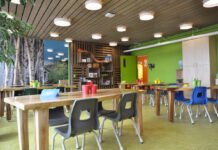What is the inverted classroom? No, it is not a question of moving the board, or of the students becoming teachers. The ‘flipped classroom’ is a new on-site training methodology that questions the idea that the order of the factors does not alter the product.
In the inverted classroom, the contents are provided in advance and in different formats so that the classroom training time is devoted exclusively to deepening the topics , solving doubts and debating the issue. In this way, a more critical approach is achieved by students, while improving student participation and satisfaction.
In fact, this type of classroom training is becoming one of the latest trends in the training of professionals and more and more organizations are seduced by the advantages of the ‘flipped classroom’ . Among its benefits, the inverted classroom contributes to the following improvements :
-
Contents
Encourage student participation.
Although there are no studies on the greater interaction of students through this methodology, given the recent implementation of the system, the teachers and students who have already experienced it assure that the change between traditional and inverted classroom training is considerable. For teachers, the ‘flipped classroom’ manages to capture the attention of the participants throughout the class, who are more active and participatory. For their part, the students – having previously worked on the material – better understand the content and feel more secure when contributing their ideas or doubts.
-
Encourage teamwork.
While in traditional face-to-face training, the class was largely dedicated to transmitting the subject matter from the teacher to the students, the inverted classroom takes this work out and focuses its objective on establishing and expanding knowledge through group discussions and activities. and collaborative .
-
It provides personalized learning.
What have you understood us? The ‘flipped classroom’ allows attendees to clarify their doubts individually, having previously treated the subject. On the contrary, in traditional courses, the teacher needs class time to advance the subject, which makes it impossible for him to answer all the questions.
-
Develops the analytical sense of workers.
It is no longer a matter of transferring a series of knowledge to the professionals so that they assume it to be true or valid, but rather the inverted classroom enhances the debate of the contents, the contribution of different perspectives, and as a consequence, improves the critical and analytical capacity of the participants and prepares them for conflict resolution.
-
It promotes academic freedom .
Although the contents of the course are the same in terms of printed material, bibliography or videos, the time that the teacher is in the classroom can be used to develop the activities and techniques that he deems appropriate depending on the demands and needs of the students. For example, imagine a training action in effective communication given to two groups of workers from the same company: one from sales and the other from managers. In this case, the ‘flipped classroom’ will allow the teacher to delve into sales techniques in the first case, focusing on communication and leadership in the second.








